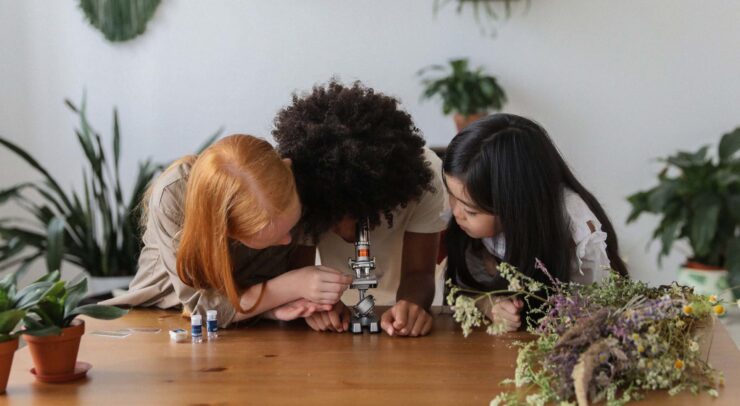SCIENCE OUTREACH PLATFORM FEATURES U OF O PROFESSORS AND INDUSTRY PROFESSIONALS
Before the Internet, the best way to spread information was to go to a busy street, stand on a soapbox, and wait as passersby gathered to hear your speeches. Nowadays, scientists are still getting up on their soapboxes, but this time, it’s to promote the amazing work being done by women in STEM.
Soapbox Science showcases the work of women and non-binary scientists by placing them on soapboxes in busy public spaces. The aim of these events is to reach a diverse audience, including an ‘accidental’ audience of people who had not intended to visit a science event that day. In this way, passersby may heckle, question, and investigate the scientists in a fun and casual setting.
Since its inaugural event in 2011, Soapbox Science has featured over 1,500 scientists and reached 214,755 members of the public. Over the course of ten years, Soapbox Science has expanded from a single event in London, United Kingdom, to dozens of events worldwide. More recently, Soapbox Science has travelled across the pond to set up chapters in Canada.
On Sept. 22 and 23, Soapbox Science was held virtually by event organizers Janelle Fournier, a University of Ottawa PhD candidate in the faculty of education, Amy Johnston, a U of O PhD candidate in clinical epidemiology, Pooja Shree Mishra, a science analyst with the Canadian Food Inspection Agency, and Donatille Mujawamariya, a U of O professor in the faculty of education.
In an interview with the Fulcrum, Fournier, Johnston, and Shree Mishra spoke about the Ottawa chapter of Soapbox.
“Soapbox science started in Ottawa in 2019. The first event was held in the ByWard Market. We ended up taking a hiatus in 2020 with COVID-19 and then came back in 2021,” said Fournier.
“There was a lot going on. Everything was in flux. So, we thought with everyone just transitioning to everything virtual, it would be a bit overwhelming. I think that was a good decision,” Johnston added.
Nevertheless, Soapbox Science still held some Canadian events in 2020.
“We had some live experiences,” clarified Pooja Shree Mishra, a science analyst with the Canadian Food Inspection Agency. “Before [working with the Ottawa chapter], I was in Quebec. We had a similar experience in 2020, which was our first event. We did end up organizing our event in person in Quebec, and while it was taxing, it was rewarding in the end.”
“But in hindsight, I do prefer the virtual environment that we chose this year because of the pandemic.”
However, when asked if they would stick to virtual events post-pandemic the consensus was that live events would return, Johnston replied, “I definitely prefer in person, I think it’s so fantastic, you can’t match it, there’s so much excitement in the air, you can really feel it. The thing about in person is that you’re in a public space and people are just passing by and looking and going, what is happening, so that draws them in, and so your audience is so much more diverse because of that.”
This year, Soapbox had a diverse cast of guest speakers from academia, government and field sectors. One speaker was professor Adina Luican-Mayer from the department of physics here at the University of Ottawa, who spoke about “the amazing quantum world of the thinnest materials“. Another was a U of O PhD student, Niki Mavragani, who spoke about magnetism.
Fournier added, “there were a lot from the University of Ottawa, and as well from Carleton. We had individuals in biology, the Heart Institute, physics, and chemistry.”
The virtual event was a success with 125 tickets sold, in addition, to the five or six school classes in attendance.
“Unlike live events like the ByWard Market, where you have all kinds of people, you do not have the same liberty with an online event,” explained Shree Mishra. “We focused our [virtual] events specifically on school students who might actually benefit from all the scientific discussions that were happening.”
When asked what they hope to accomplish through soapbox science, Fournier replied, “for me, as an educator, it’s hoping to inspire one, even just one person to get into STEM to consider a career that they may not have considered beforehand.”
Shree Mishra added, “we do need representation of women in science, since many people do not even recognize the kind of brilliant work that women scientists are doing. So that awareness, that confidence in women scientists, which they definitely, of course deserve, I guess that’s something that we have to actively promote until people get used to, you know, recognizing the mettle of women scientists.”
In the future Fournier, Johnston, and Shree Mishra look forward to hosting Soapbox Science 2022 in person for the public to enjoy.





